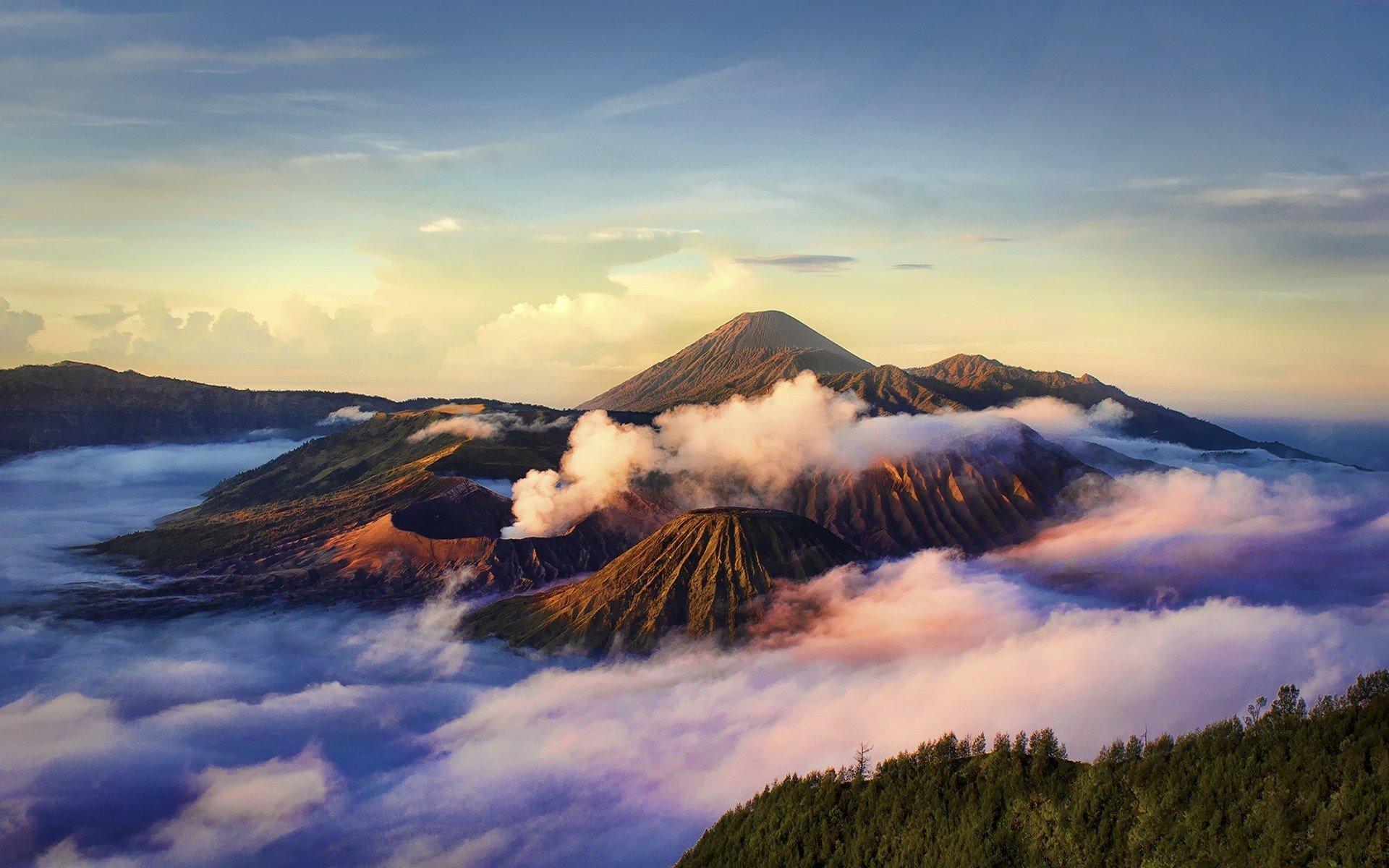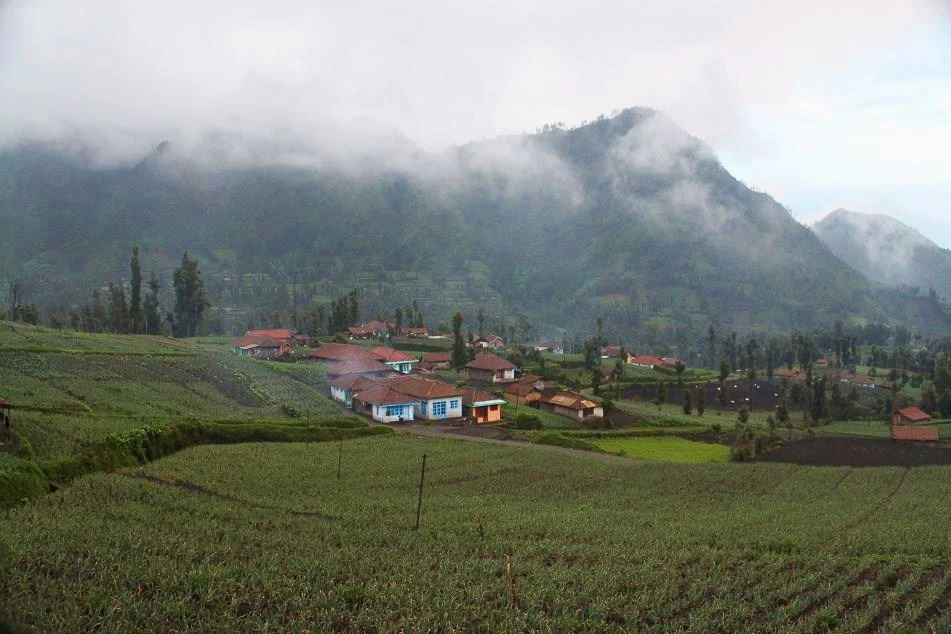Sunrise and Cloud-Hunting at Bromo Mountain

Meeting my friend again felt like a rebirth. Sitting in his car, the heat radiating from me seemed to melt away the icy fog around. I’m moving, I’m moving—rolling along with a convoy of Jeeps hauling folks to Bromo Mountain. Before getting here, I didn’t expect I’d be up at 3 a.m., losing my guide, then bursting with relief when we reunited after just 20 minutes—20 minutes that dragged like a year. Beyond soaking in the majesty of one of the world’s most famous volcanoes, there’s one thing you can’t skip here: sunrise and cloud-hunting at Bromo Mountain. That’s why I dragged myself out of bed at 3 a.m.
The dirt road’s cloaked in fog, Jeep tire tracks fading into the haze. Along the way, countless Jeeps got lost in the dark and turned back. Even local motorbike taxis wandered off, circling in the night. My friend said it takes serious know-how to navigate to the sunrise and cloud-hunting spot at Cemoro Lawang—home to the Bromo volcano. Bromo doesn’t just pull foreign tourists; heaps of local travelers flock here daily too.
The Trade-Off at Cemoro Lawang

Every gain comes with a loss, and Cemoro Lawang’s a prime example. With an active volcano serving hundreds, even thousands of visitors daily, local life takes a hit. That’s why the vast land around the volcano stretches out so empty—no clear paths cutting through.
Cemoro Lawang village sits a few meters higher than the volcano, a precaution against Bromo firing up again. Last year, in 2015, folks noticed Bromo getting feisty—smoke pouring out thicker each day. By late November, it started spitting ash into the air. Indonesia’s government slapped a ban on climbing Bromo, enforcing a 0.6-mile (1km) safety zone. Lucky for me, when I went, it wasn’t too active, so I could climb to the crater no sweat—though you can’t linger up there long with that choking sulfur stench. I’ll dive into the crater climb in my next post.
Besides the daily quake risks, Cemoro Lawang catches a lot of flak from volcanic smoke drifting over. Most trees here are conifers. Crops take a beating too—leaves yellowing from the fumes when smoke spikes. And the air locals breathe every day? Not exactly fresh.
Sunrise and Cloud-Hunting at Bromo Mountain
Back to sunrise and cloud-hunting at Bromo Mountain. With my friend’s savvy, we soon reached the base of the climb to the sunrise spot, about 3 miles (5km) from Bromo volcano. Getting there, I couldn’t help but admire some foreign tourists hiking up—must’ve started at 2 a.m., using compasses to navigate without guides. Or maybe they scoped it out days earlier to trek up for Bromo’s clouds.
Cemoro Lawang’s air is chilly enough, but at 3 or 4 a.m., it’s brutal—hands too numb to grip your phone for pics once you hit the top. The sunrise peak was packed—I don’t even know its name. Didn’t care by then. All I knew: it’s the best perch to catch the sun rising, see Cemoro Lawang village, Bromo volcano, and a thick sea of clouds below.
Luckily, even after losing my guide, the sun hadn’t risen yet. Cloud-hunting at Bromo went off without a hitch—everything emerged hazy and slow, stunning everyone watching. We all wanted epic, jaw-dropping shots, but no camera could capture it all. Cloud-hunting here’s a wild chase—clouds roll in like an ocean, white and fluffy, refusing to fade. They’re so gorgeous you’d wanna dive in and vanish into the dreamy white.
Before sunrise, fog blanketed Cemoro Lawang and Bromo’s base. Then, poking through the cloud sea, Bromo’s silhouette huffed smoke. As the sun peeked out, the village surfaced, the cloud sea thinning with altitude—starting high at Cemoro Lawang, then fading down. Sunlight chased off the epic cloud sea—the most stunning I’ve ever lucked into seeing. Bromo kept puffing smoke in the crisp air. What sets Bromo apart? It’s got no peak—hollowed out from eruptions. Easy to mix up in pics—trust me, people do. The peakless one’s Bromo; the pretty, eye-catching one next door is Batok Mountain. Batok’s long dormant, blanketed in lush green. Way off, there’s Semeru—Java’s tallest volcano at 12,060 feet (3,676m), one of Indonesia’s most active. Every 20 minutes, Semeru spits steam, dust, sometimes ash and rocks. My friend said so, but I only clocked Bromo and Batok.
After catching sunrise, everyone scrambled down to hit Bromo Mountain itself, kicking off the crater climb on this still-active beast. The sunrise and cloud-hunting gig at Bromo Mountain? A smashing success—full of feels and nature’s wow factor.
